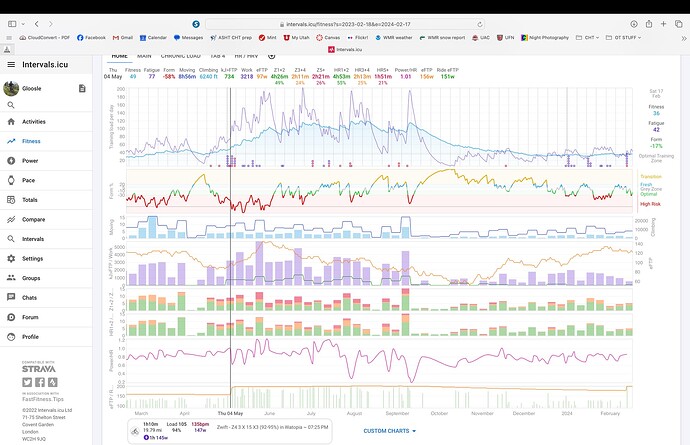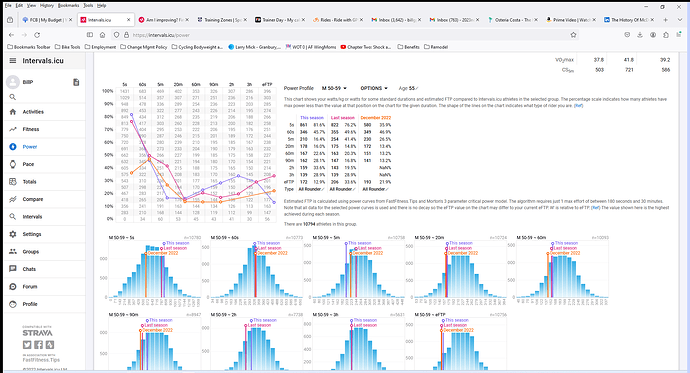I’m paying a coach on training peaks a solid amount of $$ to improve my MTB fitness. I’ve worked with him since December of 2022 and seen my FTP go from 155 to 230 down to 135 (took a low month for professional use so didn’t have high volume then had a baby born right around this FTP test) and now back up to 200.
My weight went from 199 lbs /91 kg to 230 lbs / 104 kg during the past year too despite eating pretty good. I contribute that to less lifting (going from lifting 5x / week) in addition to a couple of 1 hour rides / week and the occasional long ride to training peaks with 1-2 “lifts” vortex training lifts and secondly to “sympathy” pregnancy weight which is apparently a thing. If I want to be at 15% body fat and lose no lean mass I would be about 195 which is what I like (I’m sure a lot of ya’ll on here are more serous riders than me - I also like to lift, backcountry ski, backpack).
I’ve been MTBing for a long time but have only recently decided to put in effort into my training so I don’t get smoked on my climbs. My DH solid - during a local MTB race I was in top 10 there and I started as a more DH / enduro / shuttle rider.
I am looking for help on charts / metrics that can help me figure out if I’m actually getting into better shape. Is that power / hr? My coach tells me FTP isn’t really a measurement for fitness so I try to not use that. I’m just worried that I’m not improving much. Maybe its that my engine was / is so low that its hard to see on the trails but I still top out in granny gear on silly climbs or on my fat bike on a 50 foot climb HR shoots way up. It seems like my power / hr hasn’t really changed, if we disregard FTP (and if we don’t I’ve gained weight and not good weight) and my watts / kg is pretty awful.
Thanks for any insights!

